Mysteries of the Deep: What Lies Beneath the Ocean’s Surface
Table of Contents
The ocean, covering more than 70 percent of Earth’s surface, is often regarded as the last frontier of the planet. Under its sparkling waves lies an entire world so broad and mysterious that it is both fascinating and fascinating. Whilst humanity has taken gigantic strides to explore space, the oceans’ depths continue to be the largest, least known part of our own planet. One can only imagine the sheer size and the mysterious nature of the ocean; what is there to lie beneath the surface? Of bizarre creatures, unexplained sounds, ancient ruins, or alien-like ecosystems, these are some of the deep mysteries that have been of interest to scientists and adventurers alike.

How Much of the Ocean Is Truly Explored?
The Vastness of the Ocean: Uncharted Territory
Advances in technology notwithstanding, only about 20% of the ocean has been mapped and explored; a whopping 80% still remains a vast uncharted wilderness. Most of this is to be found in the deep ocean, a thousand kilometers below the surface, where light cannot penetrate and pressures become crushing. What could be hiding in the darkness? Some speculate an entire ecosystems, species yet to be discovered, and geological features more astounding than anything we have seen on land.
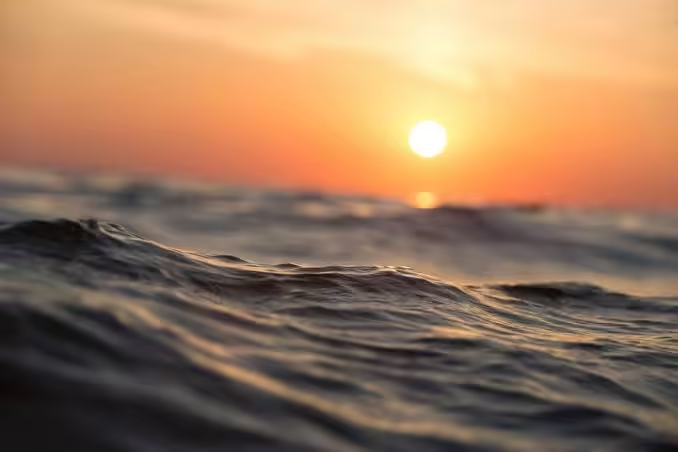
The Deepest Places: Mariana Trench and Beyond
The Mariana Trench is one of the most mysterious as well as extreme regions in the ocean, containing the Challenger Deep, the deepest known point on Earth. Located in the western Pacific Ocean, the trench plunges nearly 36,000 feet into the Earth’s crust, mounting Mount Everest like a hill.

Challenger Deep: The Ocean’s Abyss
The environment surrounding Challenger Deep is unfriendly and alien-world like. Here, the temperature is just above freezing and pressure over 1,000 times that at sea level. Still, life lives in this dark void. Bizarre hardy creatures are found in this habitat, such as amphipods, xenophyophores, and snailfish, which open up our imagination to ask what may lie deeper, over our horizon, or hidden beyond.

Challenges in the deep seabed
Exploring the deep ocean is proverbially a heavy task. High-pressure limits, complete darkness, and freezing temperatures make it impossible for humans to dive unsustained beyond a few hundred feet. Consequently, man had to develop specialized equipment, such as submarines and ROVs, to withstand such intense conditions. Yet, with these tools at hand, reaching the deepest parts of the ocean is still an incredibly difficult and expensive affair.

The Unknown Creatures of the Deep
Bioluminescent Life Forms: Nature’s Light Show
This is one of the most spectacular mysteries of the deep: bioluminescence—by the powers vested in certain deep-sea creatures, in other words, a capacity to produce their own light. Anglerfish, jellyfish, and squid are among those who use bioluminescence for hunting, communication, or protection from predators. The lights flicker like a natural neon show in pitch-black water.
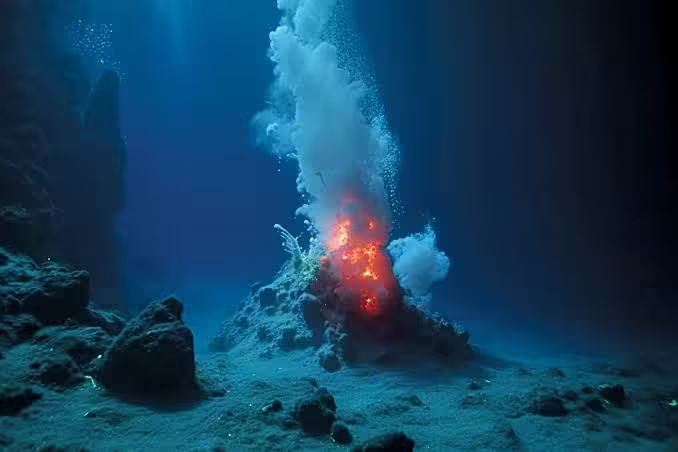
Role of Bioluminescence in Survival
For most deep sea dwellers, light is an essential survival mechanism. Predators, such as the anglerfish, dangle a glowing lure to catch prey while others flash bright colors in such a way to confuse or even scare off attackers. The existence of these creatures naturally leads one to ponder what is driving life in such an extreme environment.
Gigantic Beasts: The Myth of the Kraken and Colossal Squids
The deep ocean has been the subject of legend and mystery. Stories about gigantic sea creatures, such as the Kraken, originated from reported deep-sea creature sightings, including those photographs taken from the colossal squid. The colossal squid is the least understood creature that exists in this Earth. It occurs a few times in the natural habitat and thus has gained a mythic status.

The Megalodon: Extinct or Still Lurking Below?
One of the other sea legends is the Megalodon, an ancient shark with whiplash size, who probably went extinct more than 3 million years ago. This shark was 60 feet long and was considered the top predator of its time. However, maybe it could be alive, hiding in still-unexplored areas of the ocean. There is simply no scientific evidence for this fact, but the idea remains thrilling for many.

Bizarre Ocean Phenomena
The Bloop: The Ocean’s Murmur
In 1997, researchers at Columbia University gathered data on an unusual low-frequency sound emanating from the South Pacific. Known as “The Bloop,” the scientists first thought it could have been produced by a gigantic, previously undiscovered aquatic animal. However, further analysis convinced them it was likely an icequake. Regardless of which explanation is correct, it has placed an enormous seed of human curiosity about the kinds of sounds-and even creatures- that lie beneath the oceans.
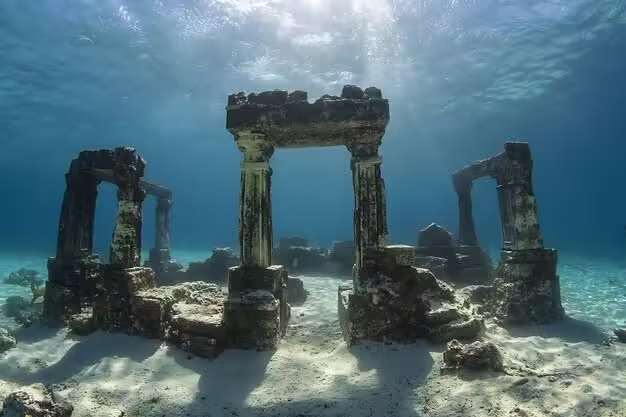
Underwater Volcanoes and Hydrothermal Vents
Hydrothermal vents, discovered as recently as the 1970s, are among the most fascinating geological phenomena on Earth. Underwater volcanoes emit mineral-rich, heat-conducted water from the molten Earth’s core. These vents do not have direct sunlight and still host unique living systems.
Ecosystems at Hydrothermal Vents
The whole of biology has been changed by the discovery of entire ecosystems existing around hydrothermal vents. There are species such as the giant tube worm, blind shrimp, and vent crabs which were often discovered living in complete darkness, feeding on chemosynthesis – a process by which nutrition is gained based on chemical energy rather than being reliant on sunlight. These discoveries raise questions about life as it might be elsewhere in the universe in extreme environments.
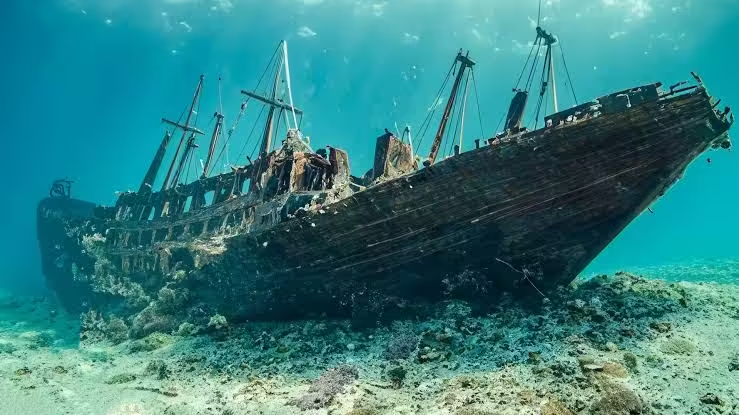
Unresolved Underwater Ruins and Structures
Lost civilizations like Atlantis have triggered imagination for centuries. Just as it turned out there is no truth to the myth of Atlantis, mysterious underwater ruins were found.
Yonaguni Monument: Nature or Man-Made?
For instance, there is the mystery of the Yonaguni Monument off Japan’s coast. Underwater, this rock structure looks almost like human hands with terraces, steps, and columns. One set of researchers assumed it must be something an ancient civilization built before recorded history, while others contend it is a natural part of the geological formation. The reality remains elusive.
Role of Technology in Ocean Exploration
The development of submarine and deep-sea drones enable human reach far more deeply into the ocean.
The invention of submarines and ROVs has significantly opened the door to access deep-ocean exploration capabilities. Human-operated submersibles have reached over 20,000 feet, such as the Alvin, and scientists can observe those kinds of environments. Meanwhile, the drones with cameras, sensors, and other equipment can go further down and take to film creatures and ecosystems never seen before.

Ocean Mapping Technologies: Shedding Light on the Unknown
Perhaps one of the most exciting discoveries in ocean discovery is high-resolution ocean mapping. In such, the capability of sonar technology to outline detailed seafloor maps can discover mountains hidden deep in the seafloor, valleys, and trenches. These provide essential data for correlating with oceanic processes and point out the areas of interest to further exploration.
Future Deep-Sea Exploration: Autonomous Vehicle and AI
Future ocean exploration will depend much on AUVs and AI. These technologies may collect data for long periods and be able to reach places inaccessible to human operators. By enabling scientists to analyze vast oceanic amounts of data, using AI makes the discovery of new species and geological formations almost possible in real time.
Shipwrecks and Sunken Cities
The Search for the Titanic: A Historical Milestone
Most people are familiar with the wreckage of the Titanic, a discovery made in 1985. It excited the world and rejuvenated interest in deep-sea research. Today, the Titanic lies over 12,000 feet deep in the North Atlantic-an archaeological site and at the same time a human reminder of how fragile they can be against nature.
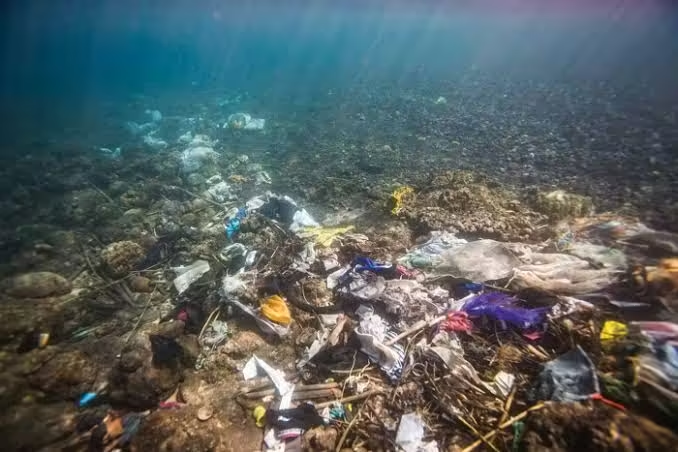
Lost Cities Under the Sea: Atlantis and Other Legends
For decades, the story of Atlantis has captivated scholars, treasure hunters, and conspiracy theorists with an equal measure of interest and mystery. It is, after all, only a myth; however, there exist several examples of real submerged cities around the world.
Real-Life Atlantis: Dwarka
Till ancient Indian texts had first described Dwarka, the city was a product of myths. Yet, it is only when underwater archaeologists found the ruins off the coast of India that everyone realized just how old the city was-more than 9,000 years old, to be more precise-and one of the oldest known underwater ruins. Questions arise about what other civilizations lie hidden beneath the ocean.
Treasures of the Deep: Shipwreck Discoveries
The ocean is littered with shipwrecks, treasure filled, be it gold or history. It may contain a galleon ship of the Spanish carrying its gold or just one of those ships lost during the World War. One gets an idea of the past from these wrecks.
The underwater technology has made it easier to locate and explore these wrecks, and its secrets surface.
Alien Life in Our Oceans?
Theories About Extraterrestrial Activity Underwater
A few scientists and enthusiasts even began speculating on other alien activities happening in the ocean. These theories come based on strange objects with lights attached that allegedly have been seen moving underwater at fantastic speeds. While such concrete proof does not exist, it still holds an interest for most researchers on UFO.
UFO or USO?
Unidentified Submerged Objects-often abbreviated as USO-are the underwater equivalent of UFOs. These mysterious sightings have been reported by sailors and pilots, even military personnel. Are these objects extraterrestrial spacecraft or some secret government technology? Here too, the truth remains a mystery, much like most others in the ocean.

Do Life Forms on Other Planets Resemble Deep-Sea Creatures?
Considering the highly extreme environments where deep-sea creatures survive, some scientists consider that similar forms of life can exist outside Earth, primarily on planets with liquid water beneath icy surfaces, like Jupiter’s moon Europa. Considering how large the ocean is, it can hold life forms, expanding our view of potential places on or off earth.
Effects of Ocean on Climate and Human Livelihoods
Role of Ocean in the Regulation of Climate
There are numerous important functions of the ocean system, with regulating Earth’s climate being fundamental. It stores enormous amounts of carbon dioxide and heat, thereby acting as a buffer against climate change. However, with global temperatures on the rise, the ability of the ocean to absorb carbon decreases, resulting in extreme weather and levels.

How is Plastic Pollution Affecting Marine Life?
Plastic pollution is one of the greatest problems facing the ocean today. Millions of tons of plastics enter the ocean every year, causing death in marine life and ecosystems. Creatures like fish and sea turtles — mistaking plastic for food — invite fatal consequences. Stopping the pollution will be crucial in preserving the health of the ocean and its inhabitants.
What If the Oceans Keep Shifting?
Current trends will have grave effects on marine life and humanity in terms of rising sea levels, acidification, and warming of the waters. Coast lines could be submerged, fisheries collapse, and whole ecosystems wipe out. Preservation is key to the ocean for the species to survive, both in marine forms and human kinds.
Conclusion
The ocean is a world unto itself, full of mysteries that still appeal to the human imagination. Although we have explored its depth to a great extent, much remains unknown. The lives that reside in the depths-creatures, ecosystems, and phenomena-have reminded us of just how large and powerful an ocean really is. As our technology advances, so too will our comprehension of this mystifying world. But as we explore and discover, we must also preserve the ocean, allowing future generations the opportunities to do the same.
FAQs
How much of the ocean is unexplored?
Nearly 80% of the ocean remains unmapped and essentially unexplored, mostly lying in the deep sea.
Why are the depths of the ocean so hard to explore?
This is difficult because of extreme pressure, freezing temperatures, and zero light at those great depths, and specialized equipment, such as submarines and ROVs, is needed to penetrate this expanse.
Are there species still yet to be discovered in the ocean?
Oh yes, scientists think there are thousands, if not millions, of undiscovered species existing in the ocean, particularly in the deep sea.
Which is the deepest known part of the ocean?
The Challenger Deep is the deepest known part of the ocean; it sits in the Mariana Trench at a depth of almost 36,000 feet, or 11,000 meters.
How does the ocean affect the Earth’s climate?
The ocean absorbs huge quantities of carbon dioxide and heat, which helps regulate the Earth’s climate and dampen the effects of global warming. Still, as it warms up, it is less effective at absorbing carbon, working against efforts to check climate change




